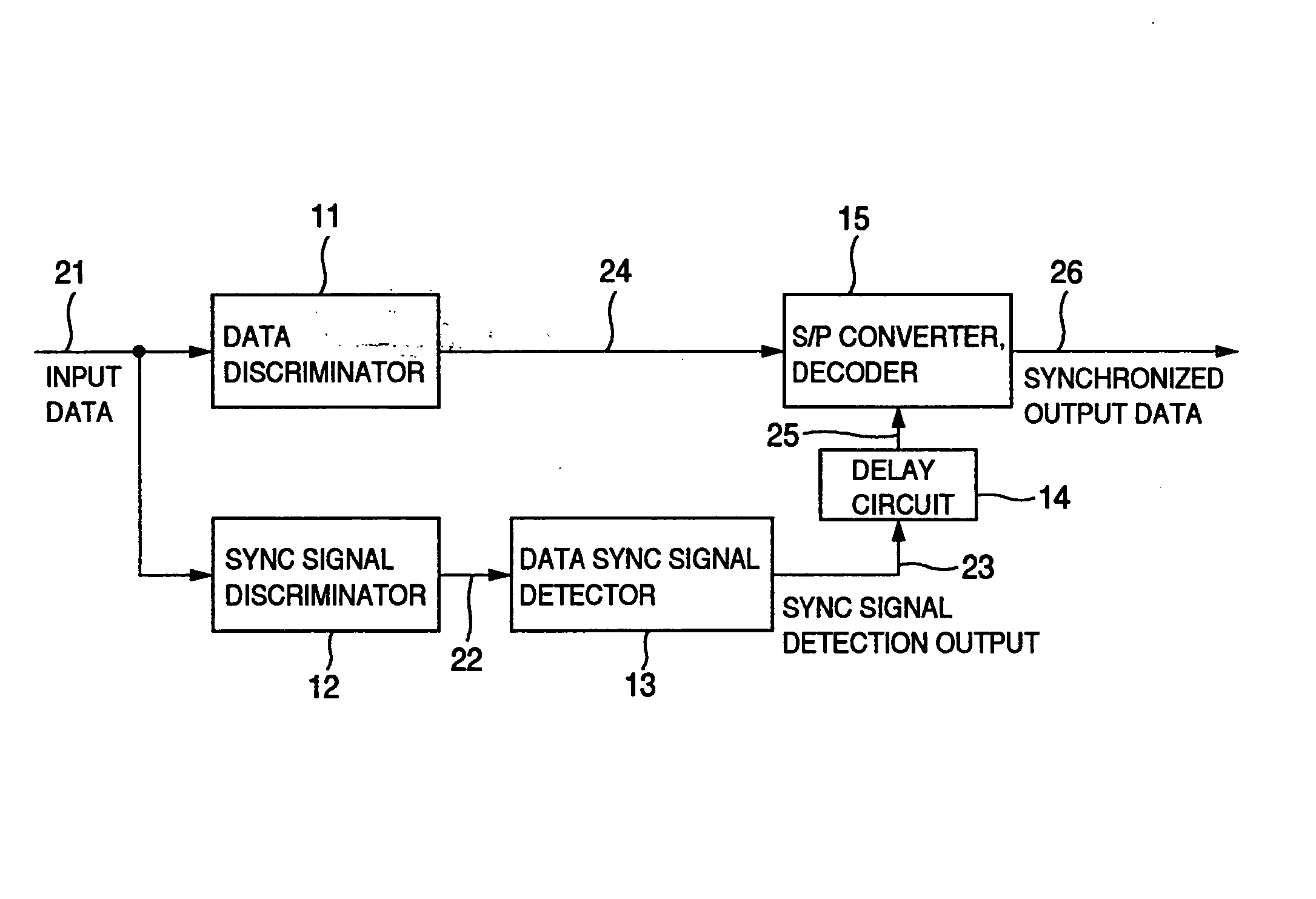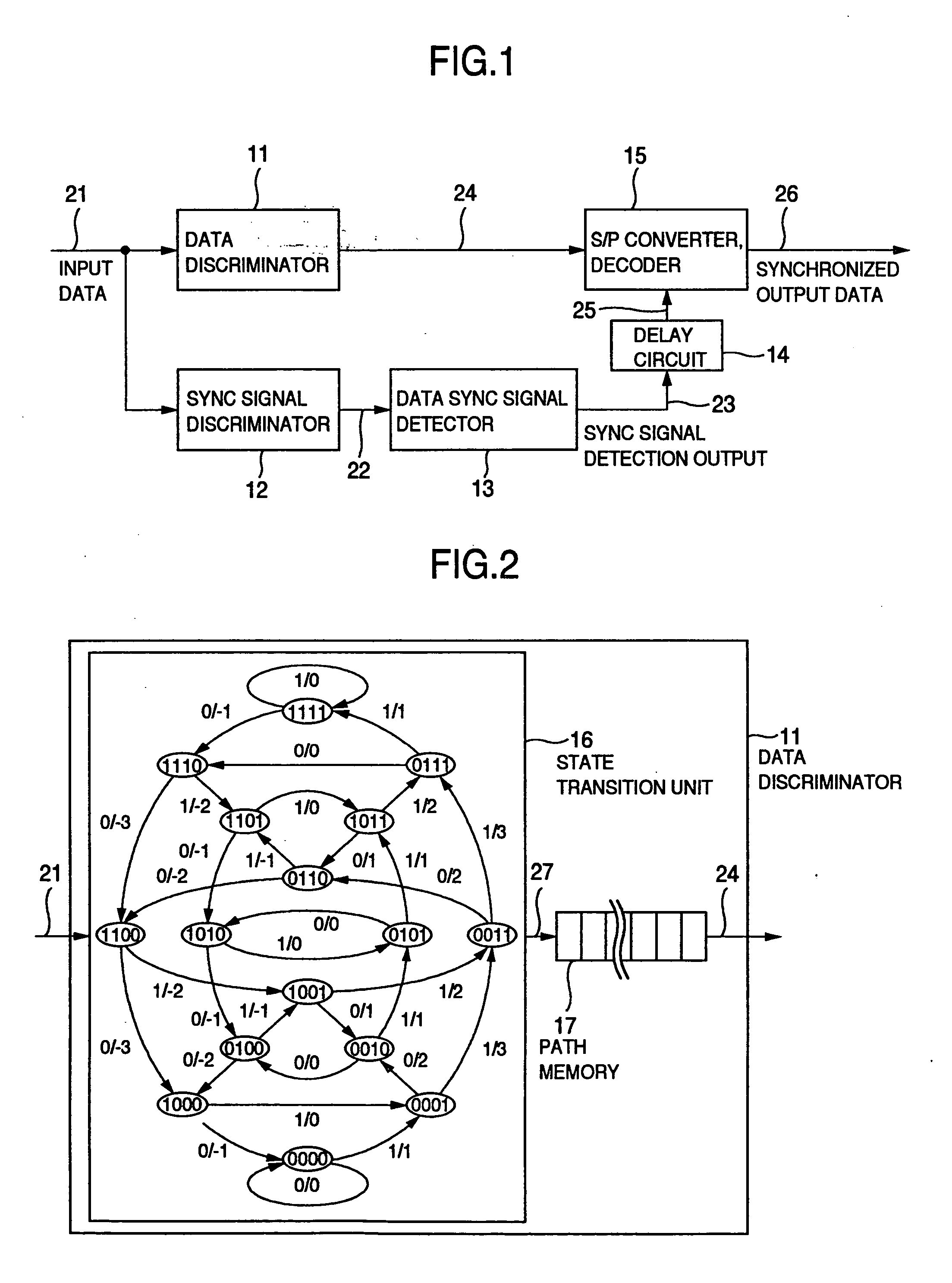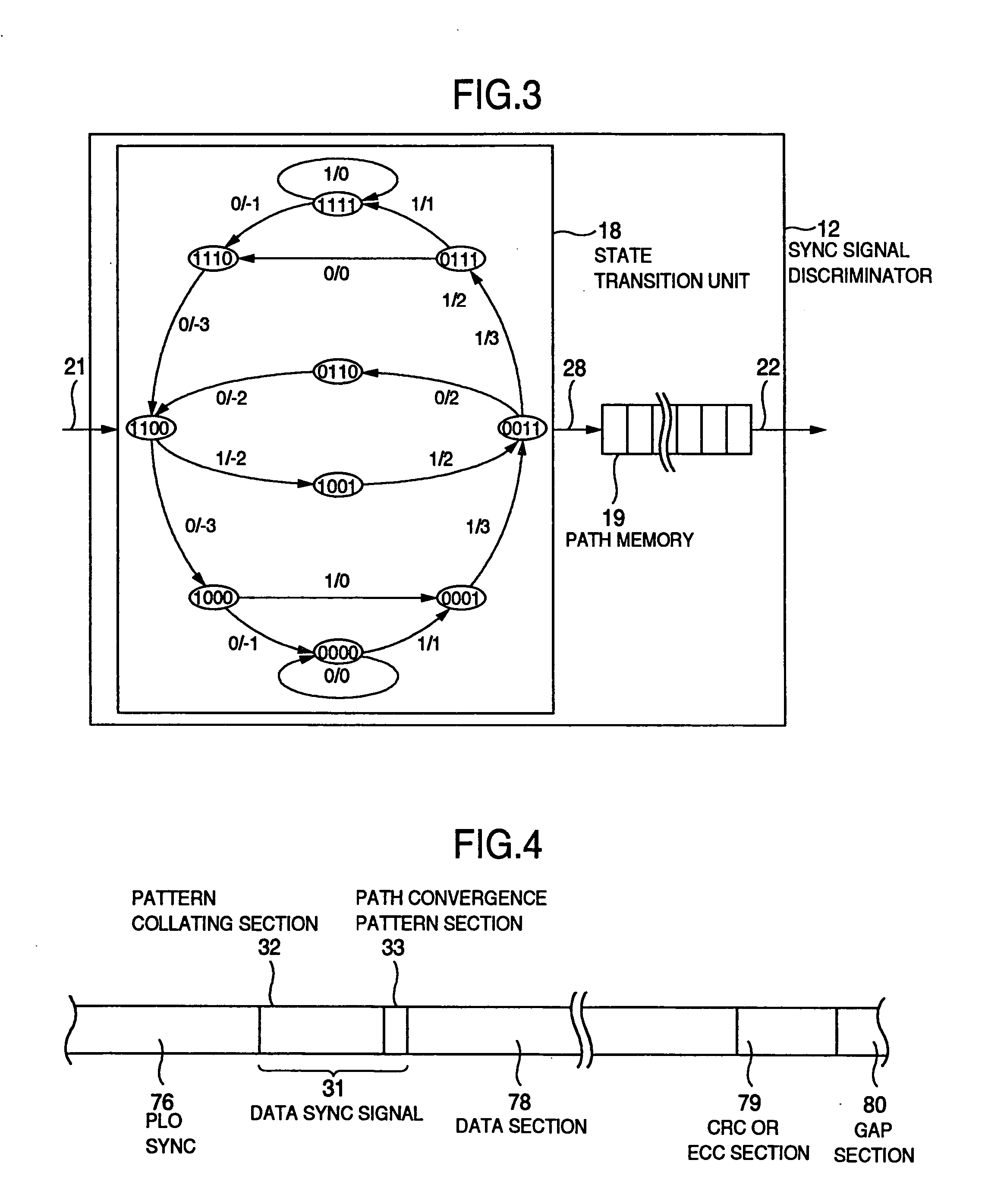Data synchronizing signal detector, signal processing device using the detector, information recording and reproducing apparatus having the detector and the device, data synchronizing signal detecting method, and information recording medium for using in the method
a data synchronization and detector technology, applied in the direction of synchronizing signal speed/phase control, digital signal error detection/correction, instruments, etc., can solve the problems of deteriorating the whole error rate, performance cannot be improved, and the failure to correctly decode, etc., to achieve the effect of improving the detection rate and high accuracy
- Summary
- Abstract
- Description
- Claims
- Application Information
AI Technical Summary
Benefits of technology
Problems solved by technology
Method used
Image
Examples
first embodiment
[0052] A data sync signal detector according to the invention will be explained with reference to FIGS. 1 to 5. First, in the data sync signal detector shown in FIG. 1, input data 21 are input to a data discriminator 11 and a sync signal discriminator 12. The data discriminator 11 discriminates the data in the input data 21 and produces a data discrimination output 24 as a discriminated code bit output. The sync signal discriminator 12 processes the input data 21 for data discrimination and produces a sync signal discrimination output 22 as a discriminated code bit output. A data sync signal detector 13 is supplied with the sync signal discrimination output 22, detects the data sync signal in the input data 21 and produces a sync signal detection output 23. The conventional method can be applied directly to the detection of the data sync signal in the data sync signal detector 13.
[0053] A delay circuit 14 delays the sync signal detection output 23 by a predetermined length of time a...
second embodiment
[0086] Now, the invention will be explained with reference to FIGS. 6 to 8. According to this embodiment, as shown in FIG. 6, the input data 21 is applied to a delay circuit 41 and a signal selector 42. The input data delay output 47 produced as the input data 21 delayed in the delay circuit 41 is applied to the other input terminal of the signal selector 42. The signal selector 42 selects the signal of the input data 21 or the input data delay output 47, and produces the selected signal as an input data select output 48. The input data select output 48 is applied to a data discriminator 43.
[0087] The data discriminator 43 produces a data discrimination output 49 as the result of discrimination. The data discrimination output 49 is applied to a data sync signal detector 44 and a serial-to-parallel converter or a decoder 46. The data sync signal detector 44 detects the data sync signal in the input data 21 and produces a sync signal detection output 50. The conventional method is dir...
third embodiment
[0103] Now, the invention will be explained with reference to FIGS. 9 to 11. First, referring to FIG. 9, the input data 21 is applied to the delay circuit 81 and the signal selector 82 according to this embodiment. The input data delay output 87 constituted of the input data 21 delayed by the delay circuit 81 is input from the other input terminal of the signal selector 82. The signal selector 82 selects the signal of the input data 21 or the signal of the input data delay output 87, and produces the selected signal as an input data select output 88. The input data select output 88 is applied to the data discriminator 83.
[0104] The data discriminator 83 discriminates the input data select output 88 and produces the sync signal discrimination output 89 and the data discrimination output 92. The sync signal discrimination output 89 is applied to the data sync signal detector 84. The data discrimination output 92 is applied to the serial-to-parallel converter or the decoder 86. The dat...
PUM
| Property | Measurement | Unit |
|---|---|---|
| code rate loss | aaaaa | aaaaa |
| unit storage area | aaaaa | aaaaa |
| delay time | aaaaa | aaaaa |
Abstract
Description
Claims
Application Information
 Login to View More
Login to View More - R&D
- Intellectual Property
- Life Sciences
- Materials
- Tech Scout
- Unparalleled Data Quality
- Higher Quality Content
- 60% Fewer Hallucinations
Browse by: Latest US Patents, China's latest patents, Technical Efficacy Thesaurus, Application Domain, Technology Topic, Popular Technical Reports.
© 2025 PatSnap. All rights reserved.Legal|Privacy policy|Modern Slavery Act Transparency Statement|Sitemap|About US| Contact US: help@patsnap.com



